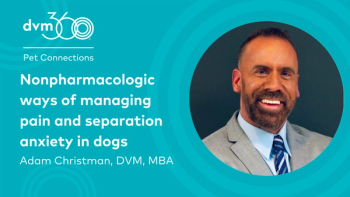
What you know is a little dangerous
Americans are traditionally comfortable with the laws that prohibit them from taking certain actions such as expectorating in public or conducting insider trading in private.
Americans are traditionally comfortable with laws that prohibit them from taking certain actions such as expectorating in public or conducting insider trading in private. There's often much more concern over the prospect of the government putting specific obligations on us as citizens. A good example of this distinction was highlighted in one of the final episodes of TV's Seinfeld, in which the main characters were arrested for failing to act in a situation where Massachusetts law obligated a witness to act.
A similar legal obligation is quickly working its way to the U.S. Supreme Court for interpretation of its constitutionality. The legislation in question is that portion of the new federal health-care law that requires Americans to purchase health insurance or be subject to a monetary fine. Many legal scholars consider this affirmative mandate to be a violation of the Constitution in that it puts demands on citizens merely as a result of their birth.
Now, contrast this debate with the legal concept of taking an action and thereby causing detrimental reliance on the part of another. This age-old legal principle provides that even though there may be no obligation to act, should a person choose to act, they must do so in a way that does not lead another into failing to receive other assistance they could have obtained absent the first person's act.
The drowning problem
The example traditionally used in law school is the scenario where a person is drowning and there are several people on the beach. One big guy swims out to help then discovers that the drowning person is a person he doesn't care for. The rescuer simply turns around and swims back to shore.
By the time others on the beach swam out to help after hearing from the potential rescuer that he refused to try to help, the one in peril had drowned.
Ordinarily, there is no affirmative obligation on the part of anyone who is not a working lifeguard to make every effort to save a drowning person. And if the rescuer were the only one on the beach, he would be pretty much entitled to let the swimmer drown before or after swimming out and recognizing him. However, in this situation, the rescuer took action that led others on the beach to not call emergency services and not try to render help themselves.
To his detriment, the drowning swimmer relied on the act of another.
Therefore, civil, and possibly criminal, liability could follow the rescuer who refused to rescue.
Your patient problem
With these principles in mind, consider the position you're placed in when providing a physical exam or other service to a dog that appears aggressive or otherwise capable of causing injury to its owner or others.
Technically, we are, I suppose, the dog's physician, and our primary responsibility in most circumstances is the care and treatment of our patient, not its handler or owner. It would be easy to ignore the potential impact of disease, personality or abnormal mental state of that patient as it might affect its owner or the public. However, the situation is not that simple, because the general public and the individual pet owner rely on our advice (potentially to their detriment, if we're not thorough). And we may have legal obligations to act when we observe dangerous circumstances which we are trained to recognize.
By way of analogy, consider the obligation of human physicians when they encounter a patient who is diagnosed with a dangerous communicable disease or a mental illness that could pose a danger to the patient himself or to society. Members of the general public have the luxury of ignoring public dangers if they encounter them. Doctors do not share this luxury.
When a physician recognizes a threat such as a positive diagnosis of tuberculosis or plague, the law requires action beyond mere treatment of the affected patient. In the same way, doctors cannot dismiss clear evidence of spousal abuse or child abuse.
The failure to act in such circumstances would probably amount to malpractice, and in some cases, would likely constitute criminal malfeasance. In addition, such a failure to act could also give rise to an actionable claim for damages. Such a claim might be brought by a third party member of the public; it might arise from his or her detrimental reliance on the practitioner who was supposed to behave in his professional capacity as protector of public health and safety.
How it affects you
So to what extent does this obligation to act, to advise or to report dangerous circumstances apply to the small- animal veterinary practitioner? We know that a dairy veterinarian who identifies a case of tuberculosis has the potential for liability if he fails to report the finding and contagion results. We know that if a rabid cat has bitten a person and a veterinarian finds out, he must not ignore the finding and leave the authorities in the dark.
But how often do veterinarians who care for dogs identify dangerous circumstances about which an owner may be ignorant or dismissive? I believe it happens fairly often to all of us and that personal injury litigation against us in those instances could easily result.
Consider the following two real-life examples. In doing so, imagine the potential liability that might have resulted had the examining veterinarian failed to warn of the potential danger to the clients involved.
Case of the Great Dane
In one instance, a 4-month-old Great Dane puppy was presented to one of my practices for vaccinations, an examination and deworming. I had treated the mother, and I care for most of the puppy's nine siblings as well, now that they each have new separate homes.
However this one puppy (now the size of most adult dogs of other breeds) already was exhibiting virtual control over the older couple who had purchased it. Obviously no training or control had ever been exercised in the rearing of this dog, and the man and woman who brought it in were clearly scared of it.
When the young dog tried to pull that aggressive behavior on me, I showed the owners exactly what they had to do to demonstrate dominance over the dog. They were shocked that I was able to elicit submissive behavior so quickly and effectively. At that point, I explained the facts of life to them: I told them that unless they immediately undertook a training program for themselves and their Dane, they needed to find a new home for it. The failure to do one or the other was a recipe for disaster. I feared that one or both of the owners would be injured or worse.
After the demonstration and the admonition, I documented our talk in the medical record. I also discussed the matter with the assistant who was helping me with the restraint. At that point, I had taken the steps necessary to protect myself and the practice from liability for failing to advise of a potentially dangerous circumstance should the pet injure or kill its owners or someone else.
Case of the German shepherd
At another veterinary hospital, one of my colleagues had visited with an older couple who had adopted a large German shepherd from a shelter. It was a sweet dog but amazingly strong. Just barely 1 year old, it was unusually well-muscled, playful and just plain powerful. The owners were, according to the staff in the office that day, dragged into the exam room from the reception area and spun around as their new acquisition pulled on the leash, dragging them in circles.
The veterinarian and her assistant both warned the couple about how strong and how unruly the shepherd was and how it could easily present a physical risk to them. I know getting into this topic can be uncomfortable for veterinarians, and I was impressed that the staff had taken the initiative of getting into it at all.
No one likes to remind older people that they're not as physically capable as they once were. But in this instance, the issue was brought to light, and the potential danger that such a strong animal presents was raised. The discussion was then documented in the medical record.
Less than a month after this office appointment, a news item appeared on TV and in the local newspaper. The female owner of the German shepherd had been killed in an accident. Tragically, the couple's dog had been so anxious to go outdoors that it had managed to wrap up the woman's hand in its leash and then bolt downstairs to reach the door to the couple's apartment. The woman was pulled off the landing and killed when her head hit the stairs.
The legal problem
So, what happens when an accident or injury to a person results from a potentially dangerous animal? The theory of the legal claim works something like this: When the pet owner or some third party is harmed directly by a dog or through a dog's actions, the injured person's attorney looks for someone to sue. The potentially liable parties are those who either played a role in causing the injury or should have acted to avoid the risk because they knew or should have known that the risk existed.
Particularly attractive potential defendants are those who have money and/or insurance. Is it such a stretch to imagine liability extending to a veterinarian who neglected to warn the owner of a dog's aggressive tendencies? Didn't the veterinarian have a duty to warn arising from his unique knowledge? I'm guessing you'll be hearing more about this theory of liability as time goes on and the American public becomes ever more litigious.
Dr. Allen is president of the Associates in Veterinary Law P.C., which provides legal and consulting services to veterinarians. Email
For a complete list of articles by Dr. Allen, visit
Newsletter
From exam room tips to practice management insights, get trusted veterinary news delivered straight to your inbox—subscribe to dvm360.




